2-Day Unforgettable Journey to Tunis, Tunisia
Tunis, Tunisia
2 days
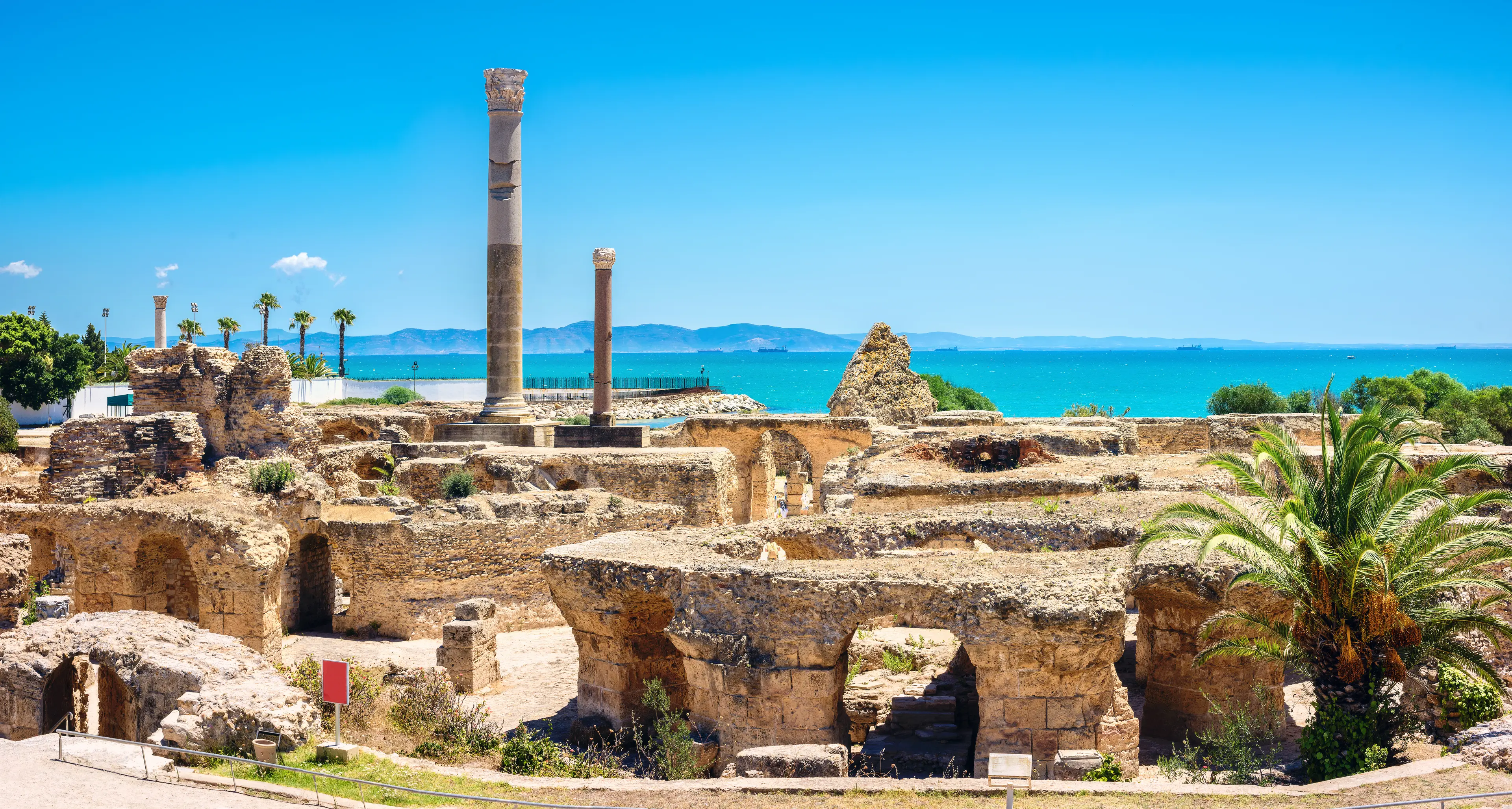
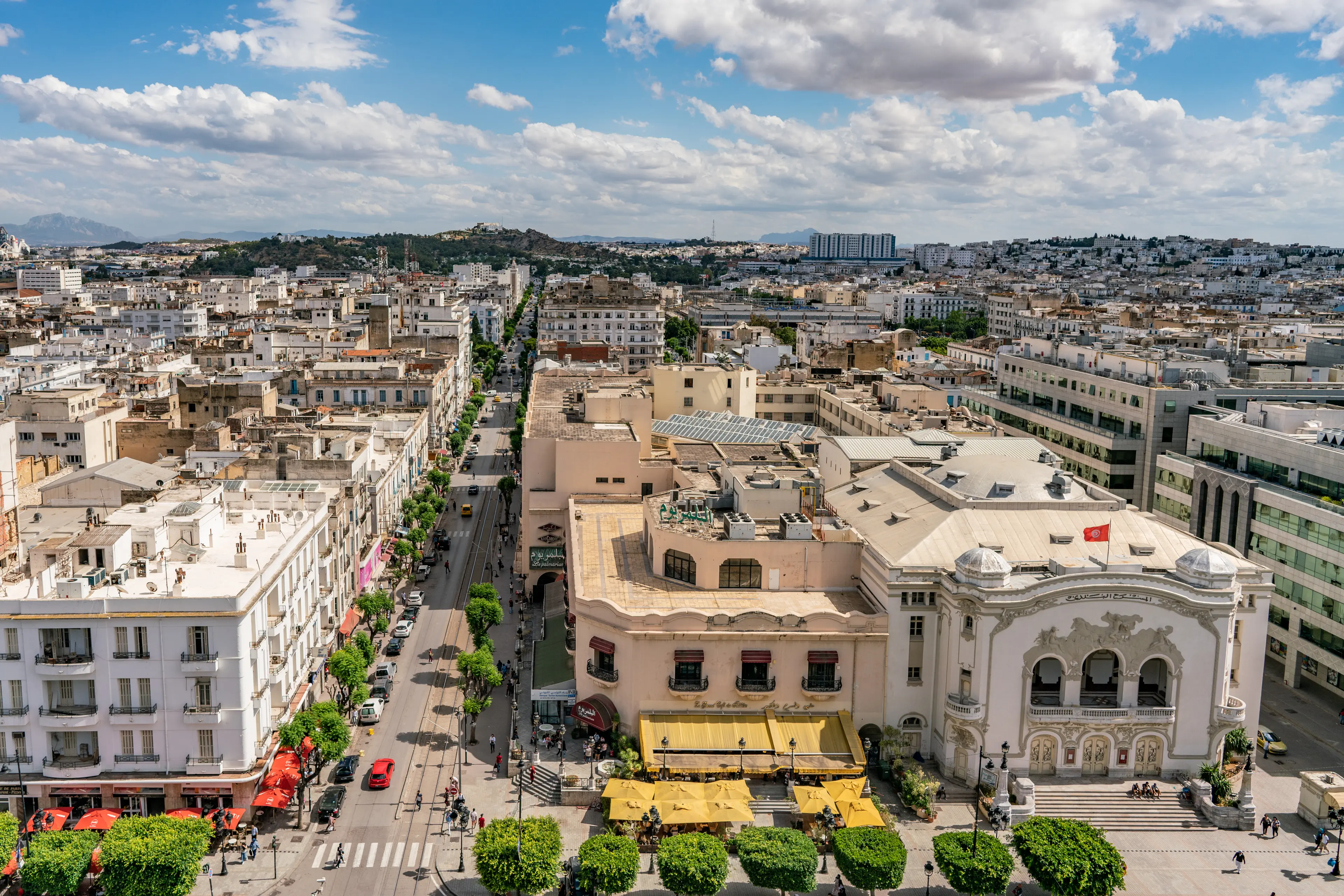
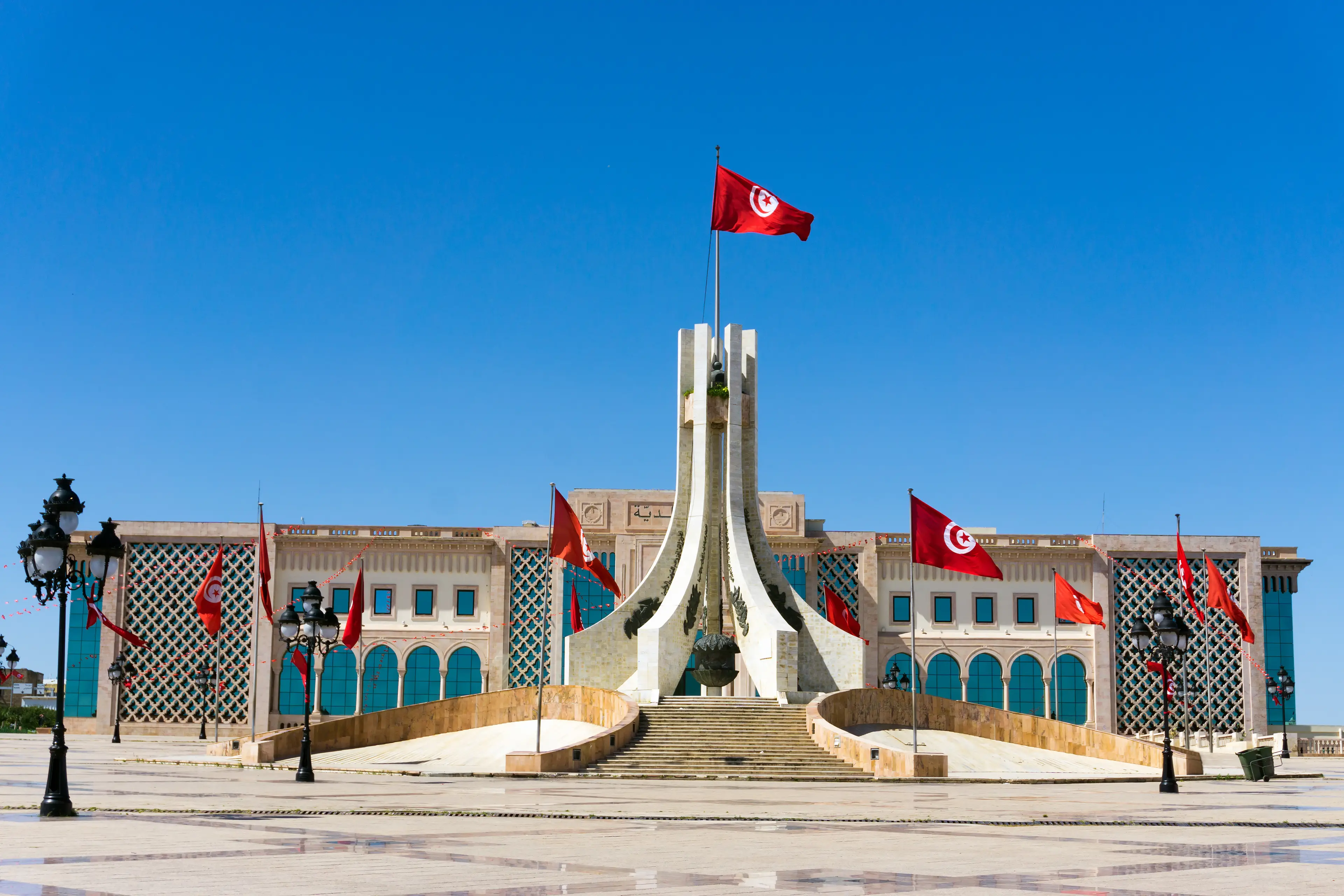
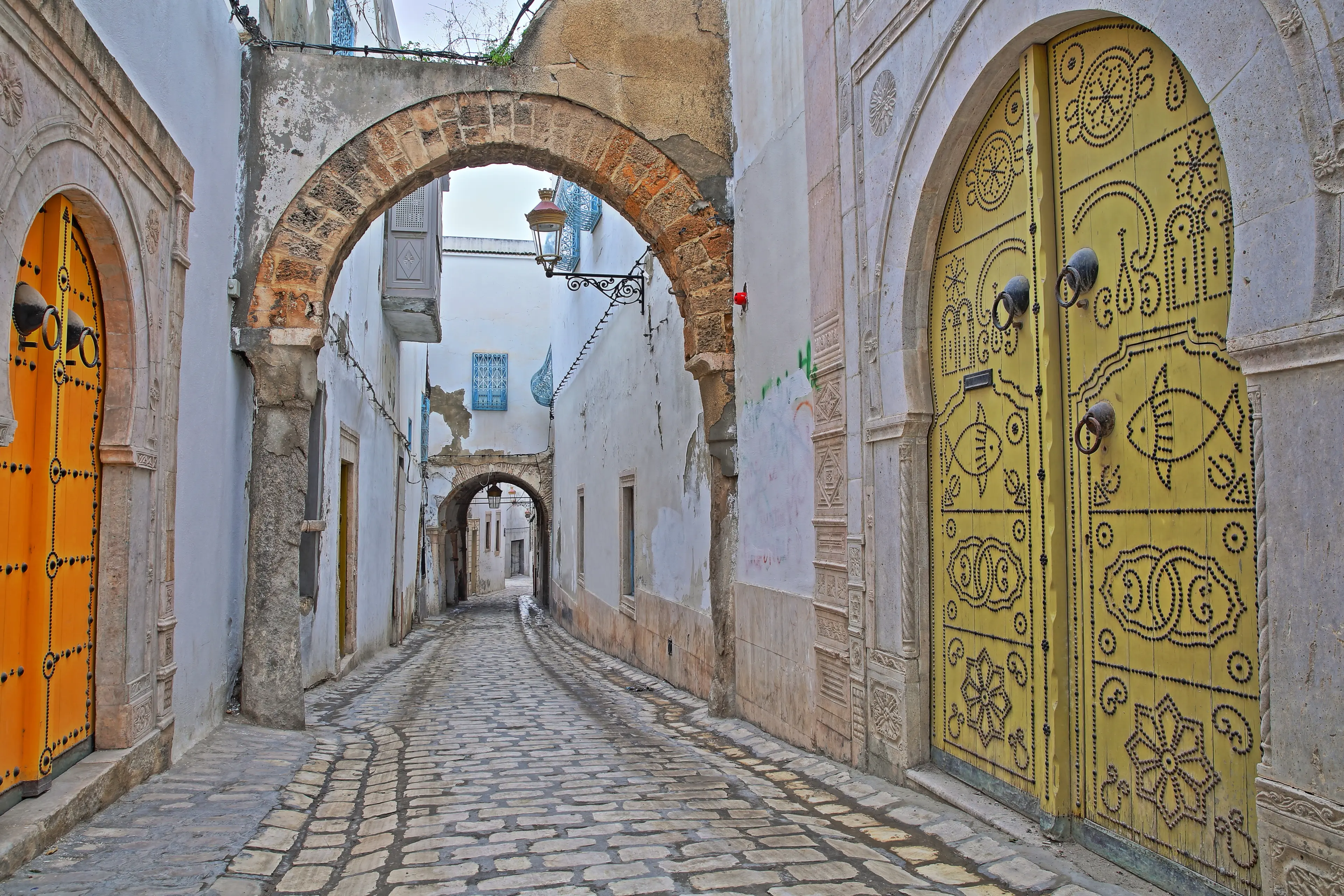

About Tunis, Tunisia
Experience the vibrant blend of old and new in Tunis, Tunisia's captivating capital. Explore the UNESCO World Heritage site of Medina, a maze of ancient streets, mosques, and markets. Visit the Bardo Museum, home to one of the world's most impressive collections of Roman mosaics. Enjoy the modern side of Tunis in Ville Nouvelle with its French colonial architecture, chic boutiques, and cafes. Take a stroll in the Belvedere Park, the city's largest park, or relax on the beautiful beaches of La Marsa. Tunis also serves as a gateway to the ancient ruins of Carthage and the stunning seaside village of Sidi Bou Said. With its rich history, diverse culture, and warm hospitality, Tunis offers an unforgettable travel experience.
2-Day Itinerary
Day 2
Discovering Carthage and Sidi Bou Said
Morning
Start your second day with a visit to the ancient ruins of Carthage. Explore the Roman amphitheater, the Antonine Baths, and the Punic ports, and learn about the city's fascinating history.
Lunch
Have lunch in a seaside restaurant, enjoying fresh seafood and stunning views of the Mediterranean Sea.
Afternoon
Spend the afternoon in the picturesque village of Sidi Bou Said, known for its blue and white architecture. Wander through the streets, visit the local shops and art galleries, and enjoy the stunning views of the sea.
Dinner
Enjoy a traditional Tunisian dinner in a local restaurant. Try the grilled fish, lamb stew, or other local specialties.
Evening
End your day with a relaxing walk along the beach, enjoying the cool sea breeze and the sound of the waves.
Attractions in Itinerary (5)
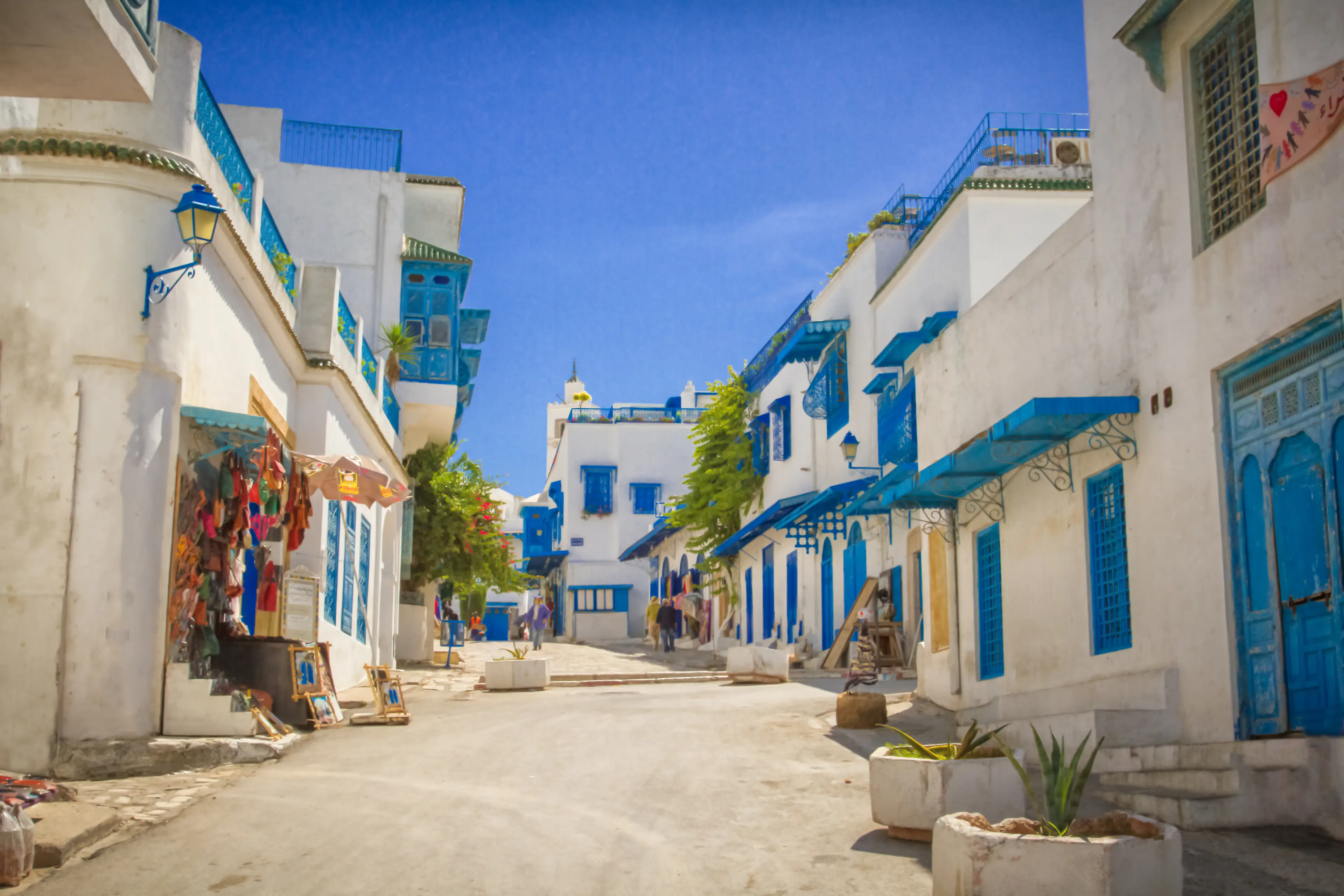
1Medina of Tunis
The Medina of Tunis is a UNESCO World Heritage Site, and is one of the first Arabo-Muslim towns of the Maghreb. It is a maze of narrow streets and alleyways, filled with historic buildings, mosques, mausoleums, and markets.
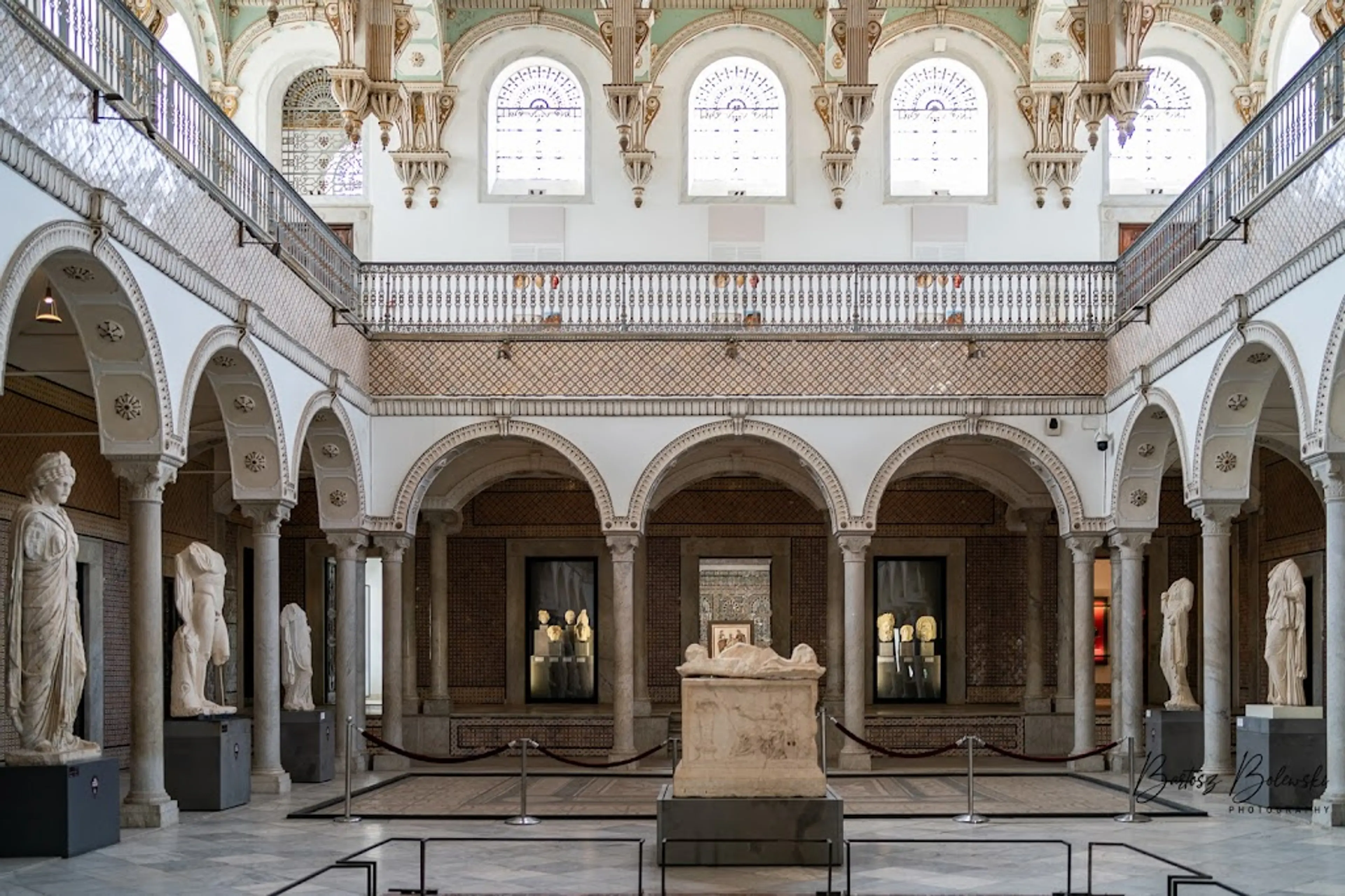
2Bardo Museum
The Bardo Museum is a museum of Tunisian history and art. It is known for its extensive collection of Roman mosaics, as well as other ancient artifacts from Tunisia and around the Mediterranean.

3Avenue Habib Bourguiba
Avenue Habib Bourguiba is the cultural, political, and economic heart of Tunisia. It is often compared to the Champs-Élysées in Paris due to its cafes, shops, and important landmarks such as the Tunisian National Theatre and the French Embassy.
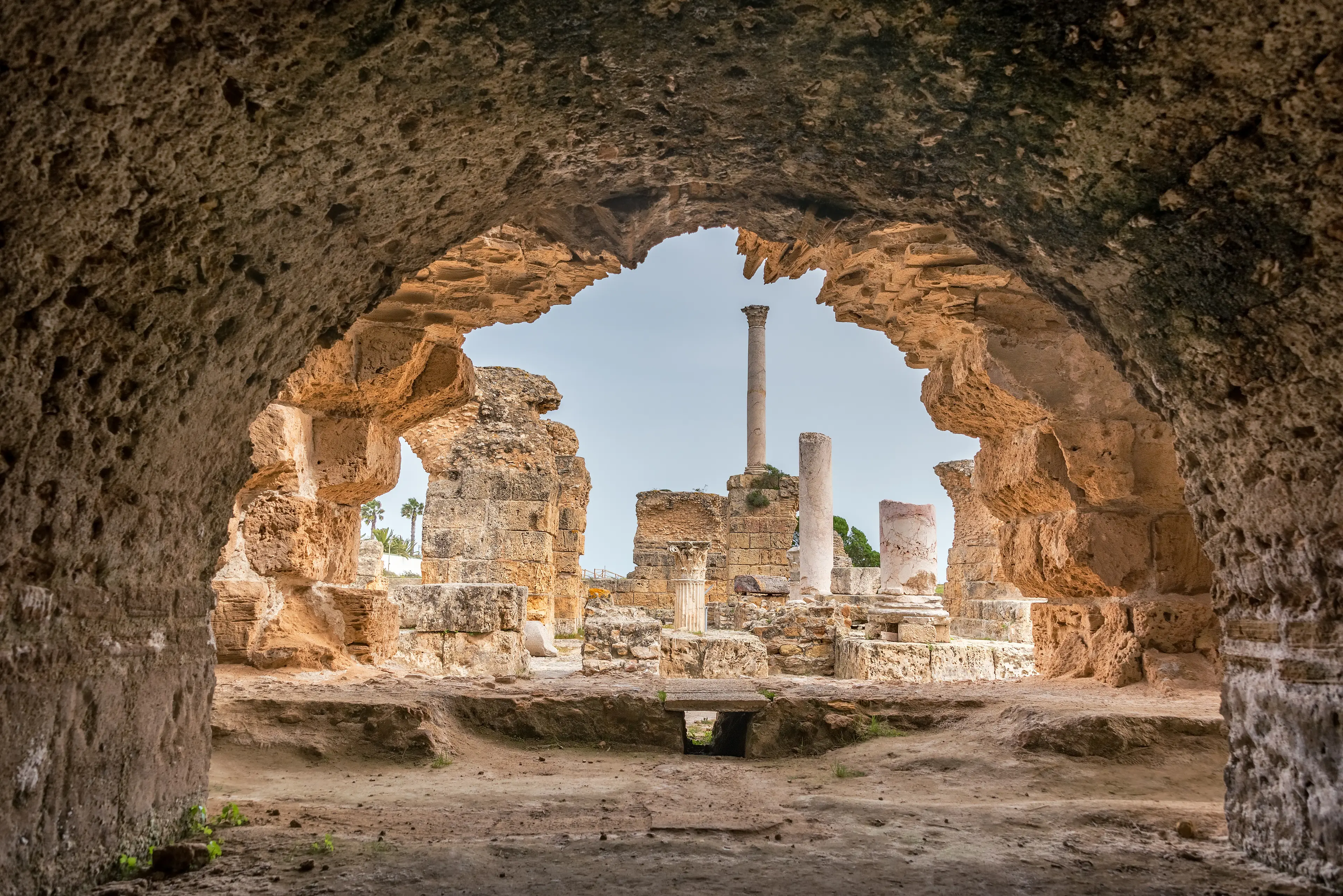
4Carthage
Carthage was once the heart of the powerful Carthaginian Empire, and is now a sprawling archaeological site. It includes the ruins of ancient buildings, baths, and the famous Carthage National Museum.
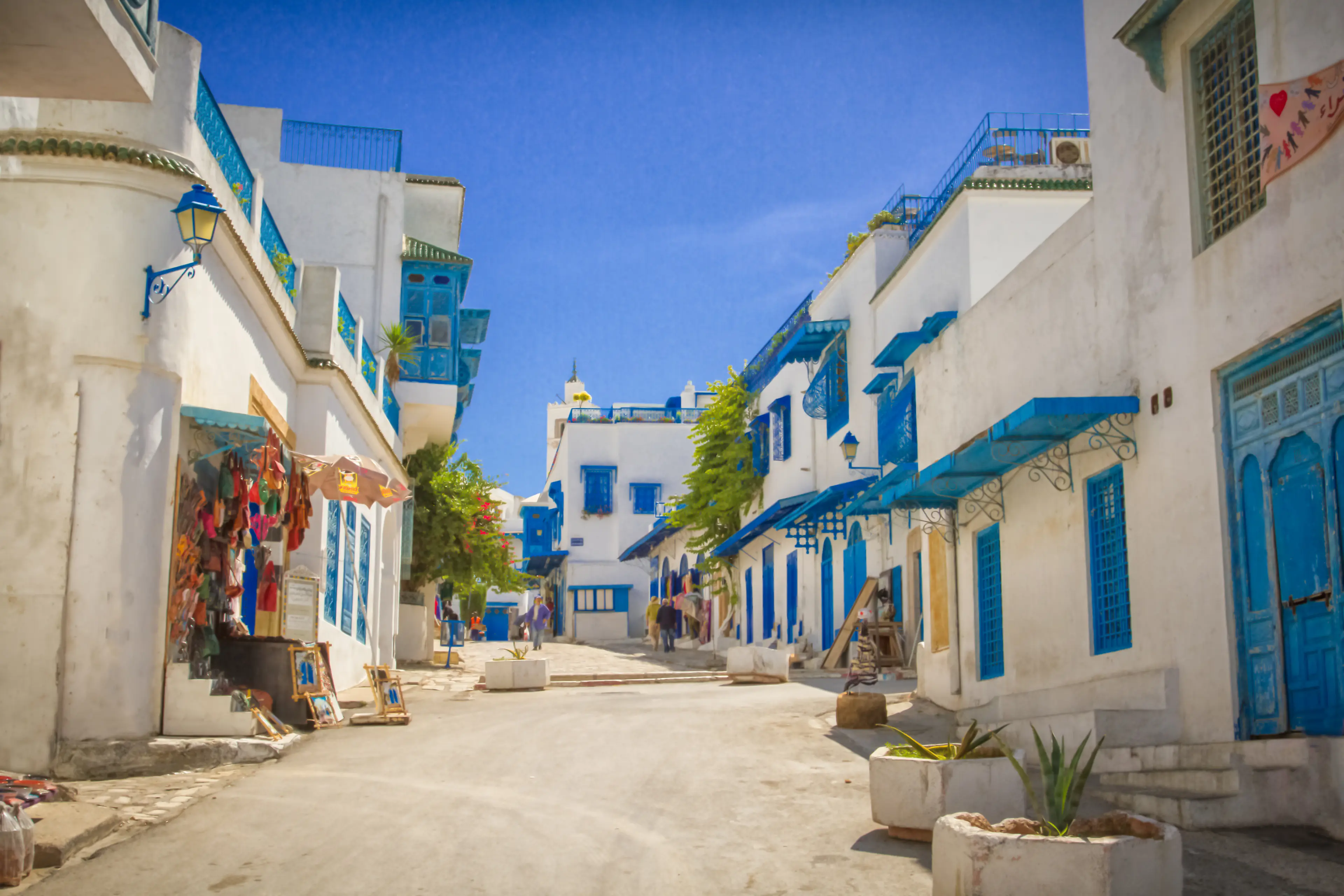
5Sidi Bou Said
Sidi Bou Said is a town filled with cobbled streets, white-washed houses with blue doors, and stunning views of the Mediterranean. It is known for its beaches, art scene, and the famous Café des Nattes.
Local Food and Drinks (12)
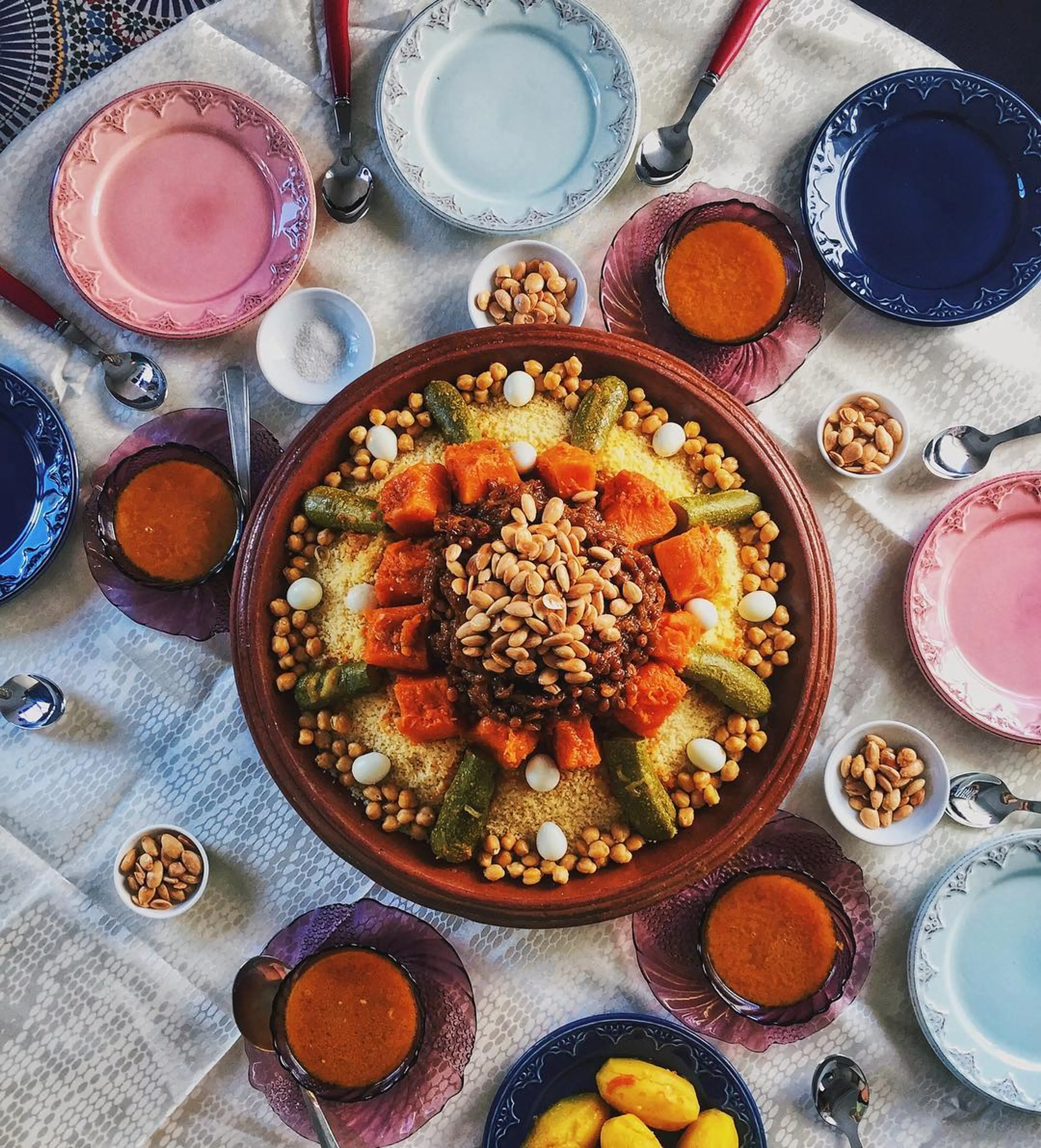
Couscous
A staple food throughout the North African cuisines of Tunisia, Algeria, Morocco, and Libya. It's made of small steamed balls of semolina, usually served with a stew spooned on top.
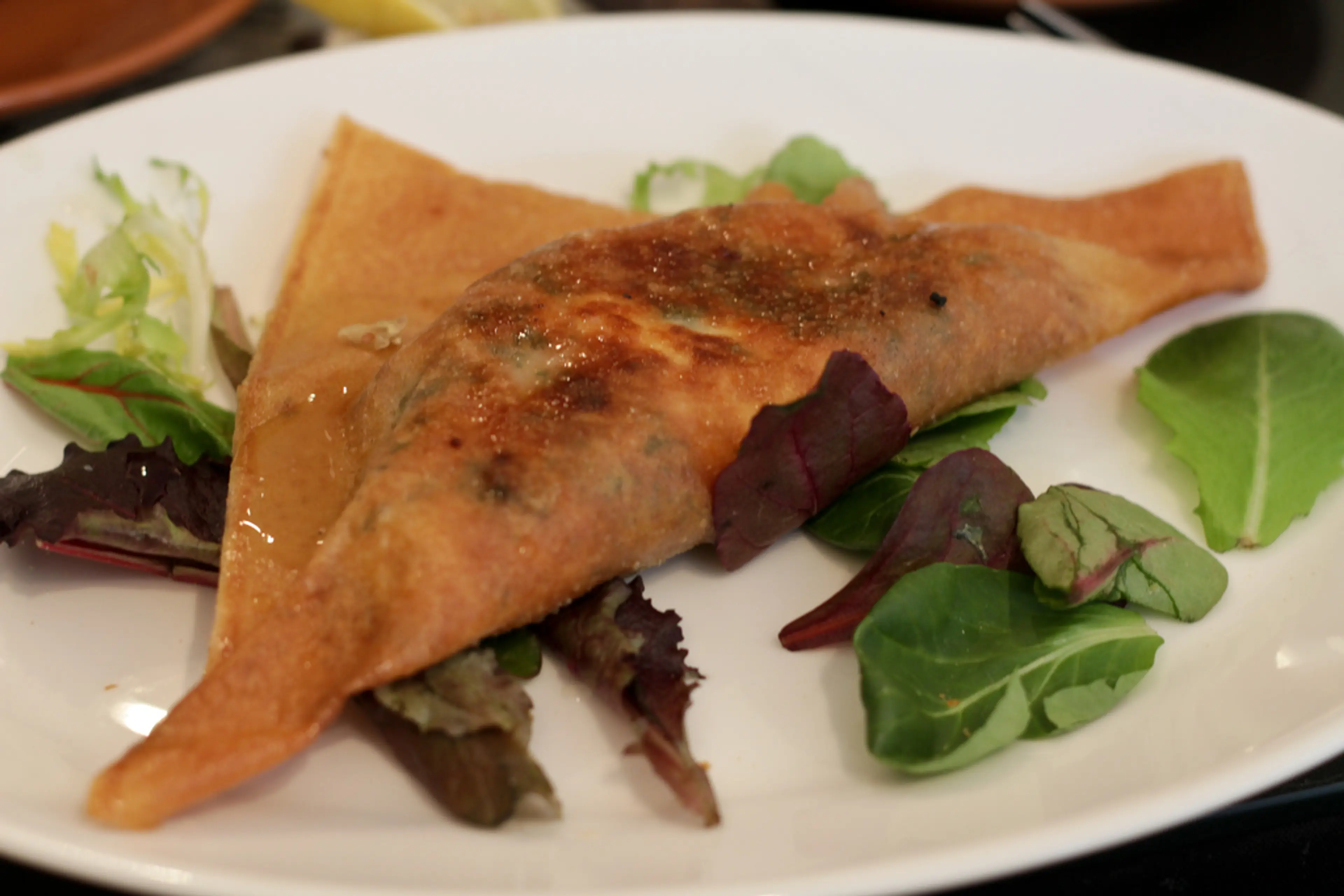
Brik
A Tunisian savory pastry, consisting of thin warka pastry around a filling commonly deep fried. The best-known version is the egg brik, a whole egg in a triangular pastry pocket with chopped onion, tuna, harissa and parsley.
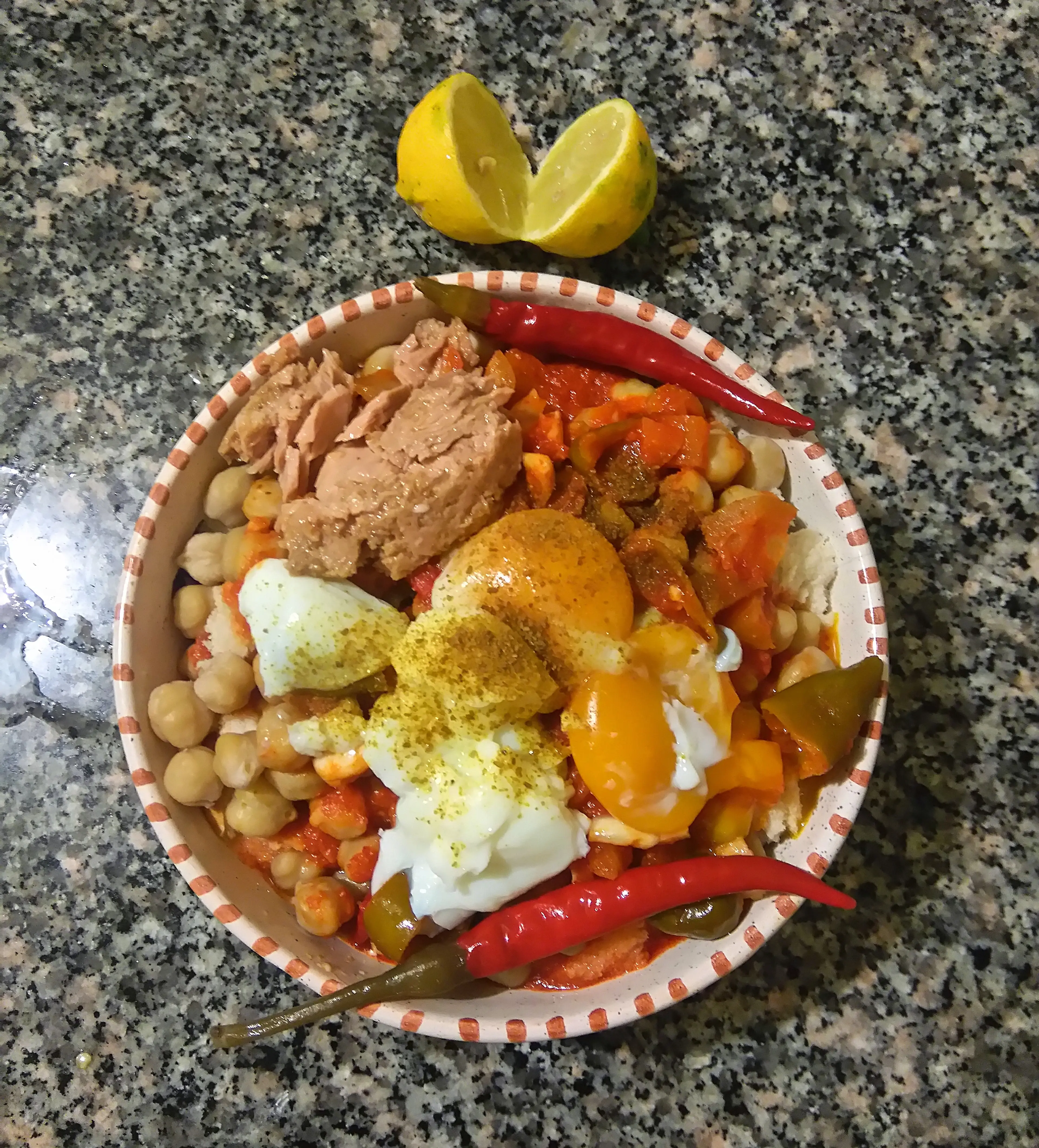
Lablabi
A traditional Tunisian dish made from chickpeas, garlic, and cumin. It's usually served over pieces of stale crusty bread and topped with olive oil, harissa, and sometimes a soft-boiled egg.
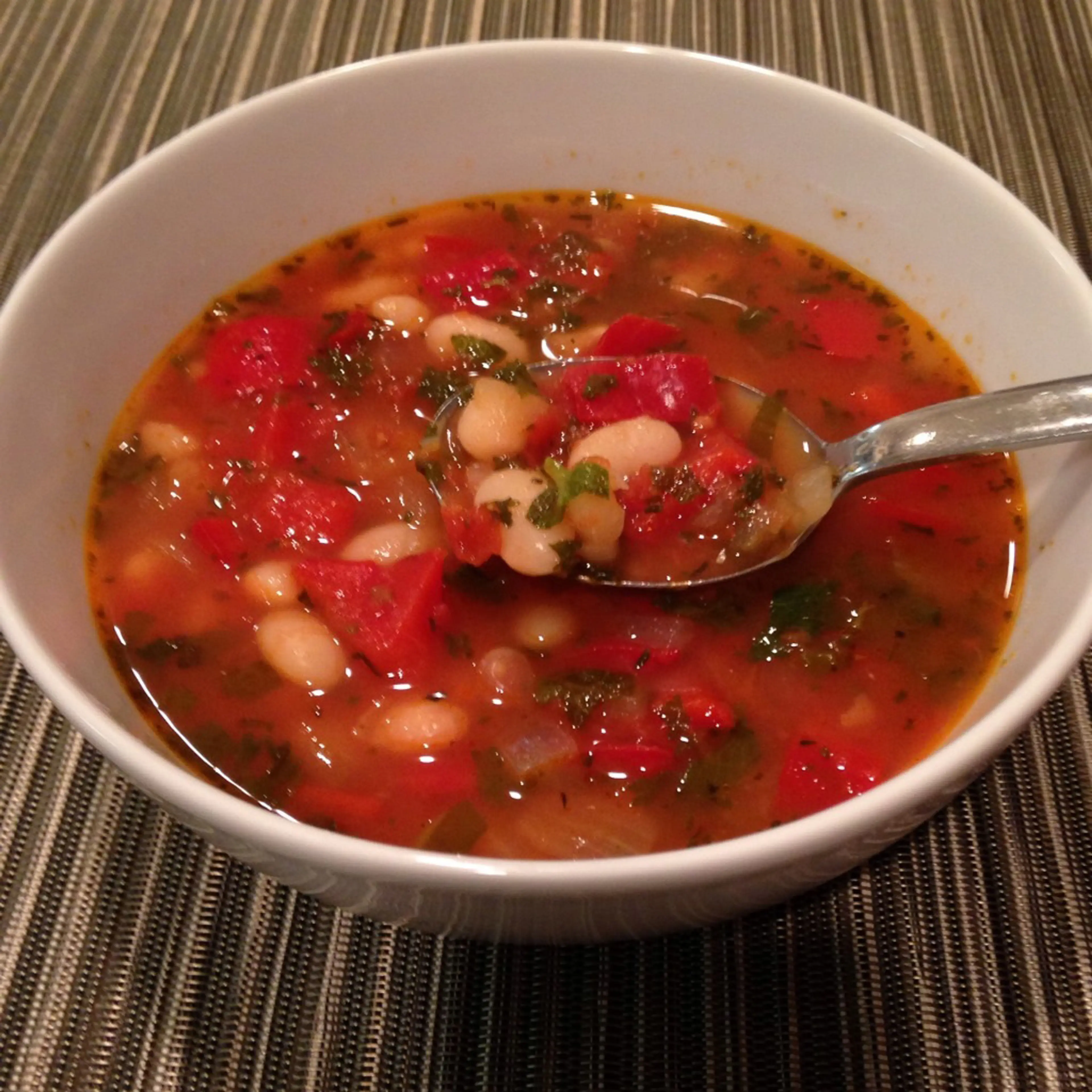
Chorba
A popular soup in Tunisia, typically made with lamb, vegetables, and chickpeas. It's often eaten with a side of bread and is a common dish during Ramadan.
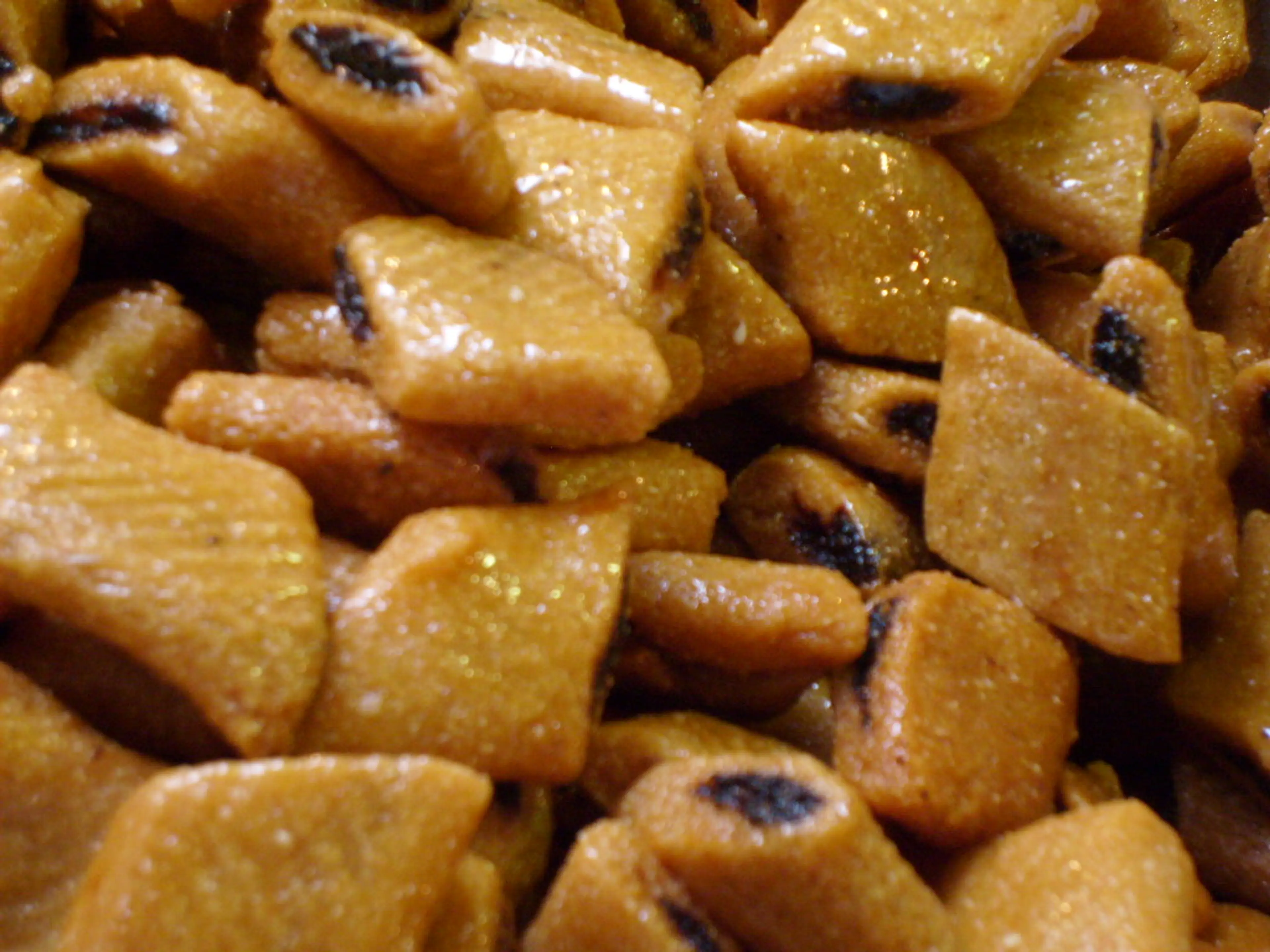
Makroudh
A North African sweet pastry that has a diamond shape, the main ingredients are semolina, dates, and honey. Makroudh is often served with mint tea.

Harissa
A hot chili pepper paste, the main ingredients of which are roasted red peppers, serrano peppers and other hot chili peppers, spices and herbs such as garlic paste, coriander seed, or caraway as well as some vegetable or olive oil.
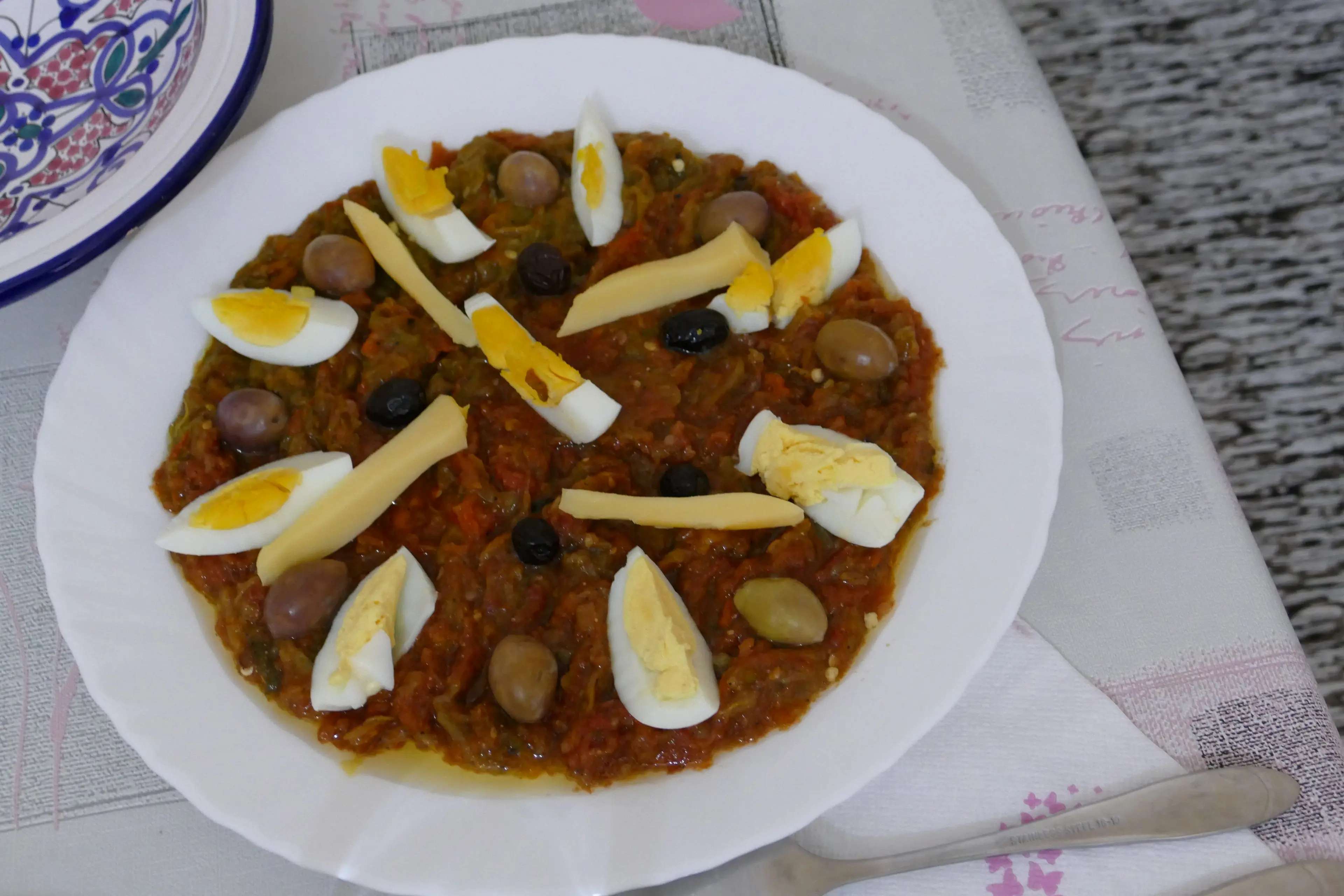
Salata Mechouia
A traditional Tunisian salad, usually made with grilled peppers, tomatoes, garlic, and onions, which are finely chopped and mixed with olive oil and spices.

Fricassee
A Tunisian sandwich made with a small fried bun (known as a fricassee) filled with tuna, boiled egg, olives, harissa, and a variety of other ingredients.
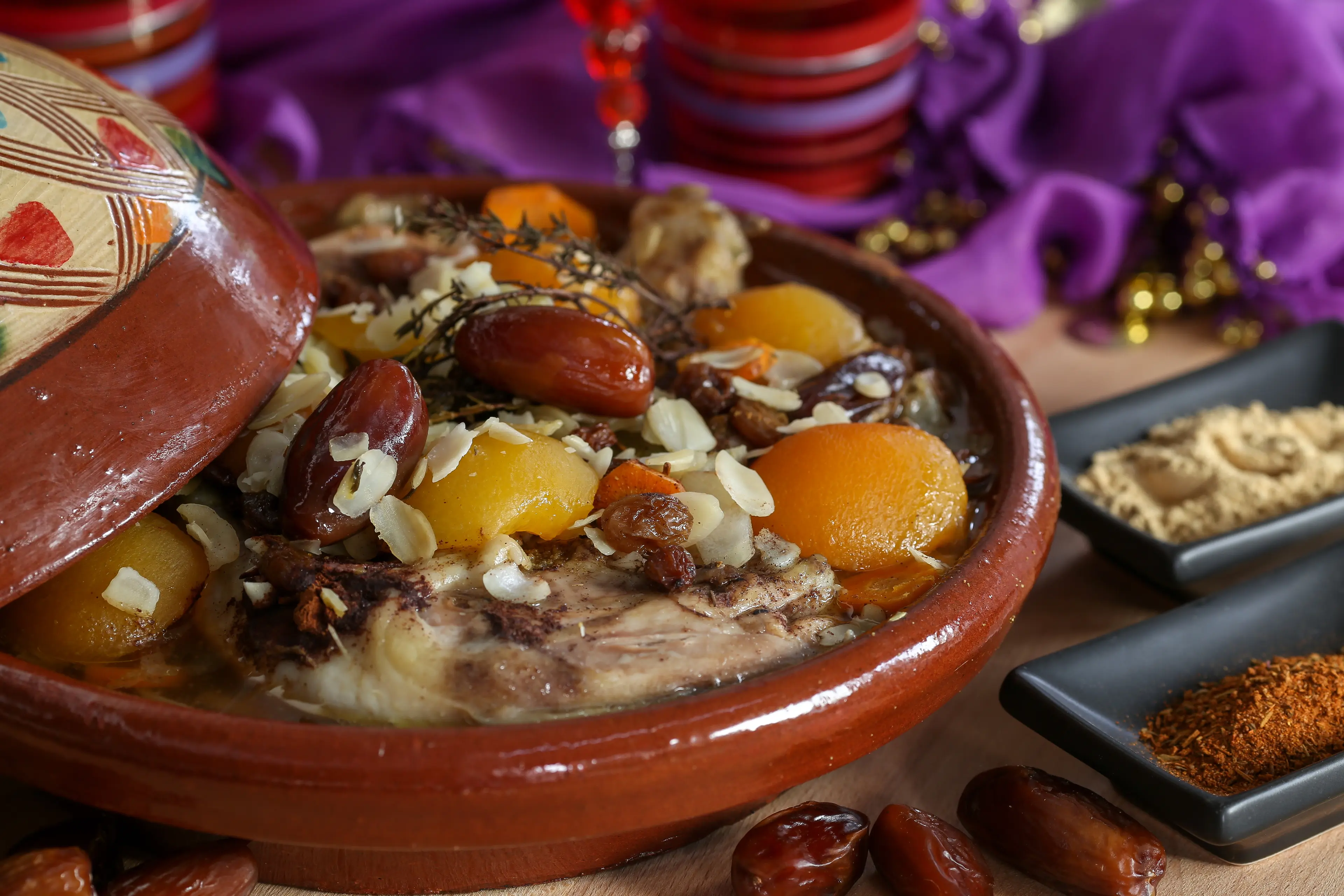
Tajine
A slow-cooked stew braised at low temperatures, resulting in tender meat with aromatic vegetables and sauce. It's named after the traditional clay pot it's cooked in.
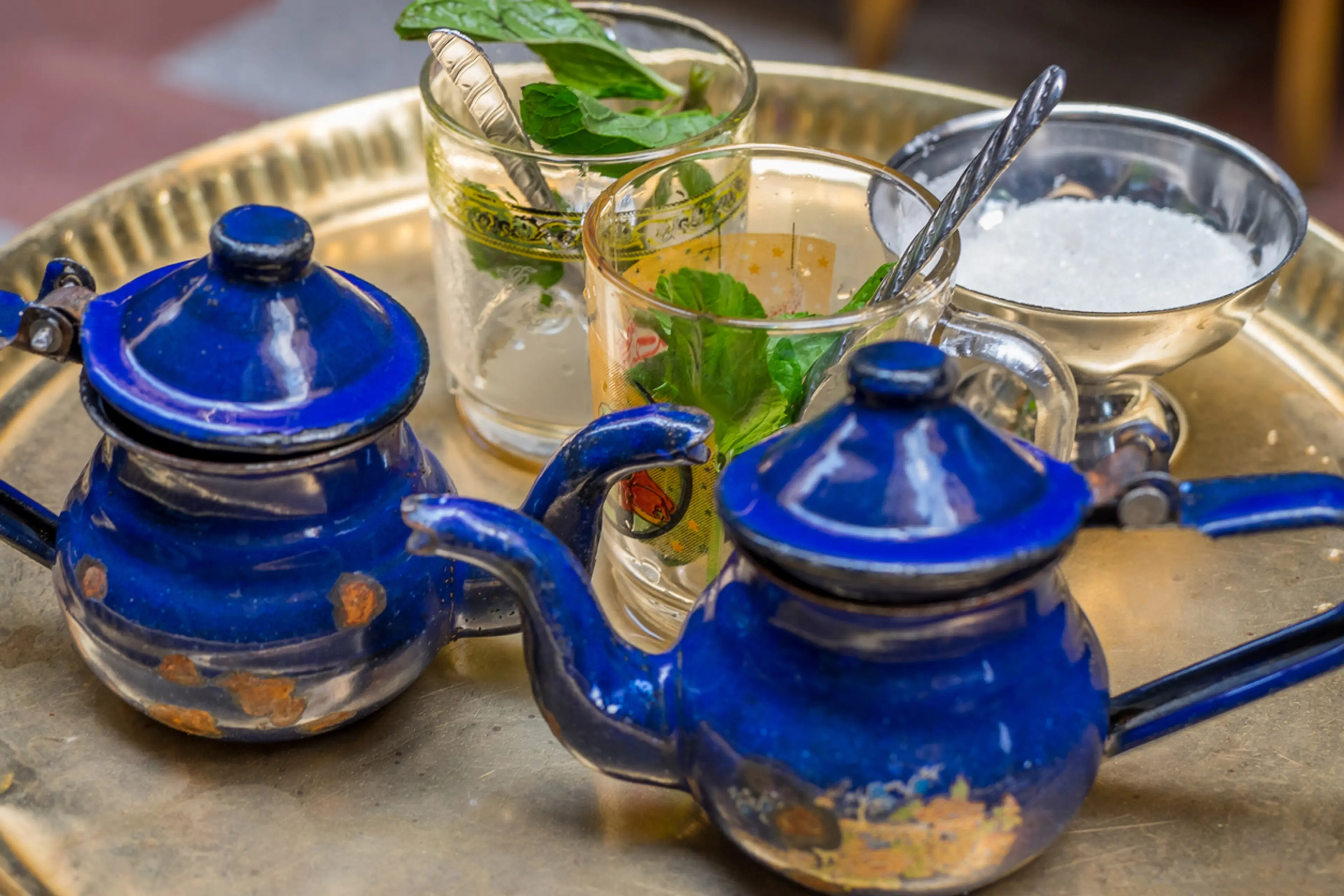
Mint Tea
A traditional Tunisian drink, made by steeping green tea with mint leaves. It's often sweetened with sugar and served in a clear glass.

Deglet Nour Dates
A variety of date that is very popular in Tunisia. They are often eaten as a snack or used in cooking and baking.
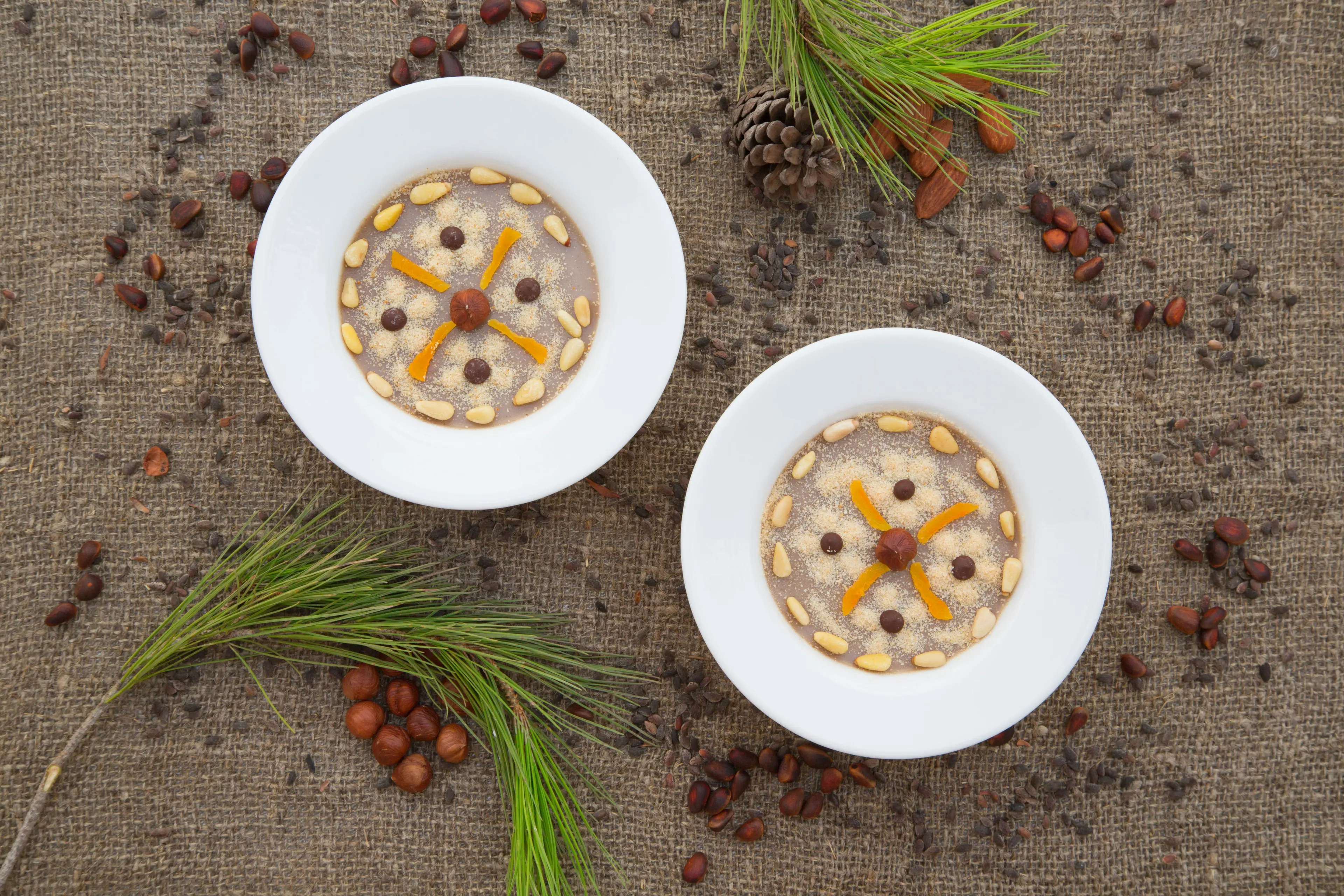
Assidat Zgougou
A traditional Tunisian dessert made from Aleppo pine seeds, sugar, and water. It's typically served during the celebration of the Prophet Muhammad's birth.
Best time to visit
The best time to visit Tunis, Tunisia is during the spring months from April to June, and the fall months from September to November. During these periods, the weather is pleasantly warm and the tourist crowds are smaller. The summer months can be extremely hot, especially in the interior regions, while the winter months can be quite cool with occasional rain.
How to get around
Taxi
Taxis are a common way to get around in Tunis. They are yellow and can be hailed from the street. They are metered, so make sure the driver turns on the meter at the start of your journey.
Train
The Tunisian National Railway Company (SNCFT) operates train services in Tunis. The main train station, Tunis Ville, is located in the city center. Trains are a reliable and efficient way to travel between cities.
Bus
Buses are a popular mode of transport in Tunis. The Société des Transports de Tunis (STT) operates bus services throughout the city. Buses can be crowded during peak hours, but they are a cheap and effective way to get around.
Light Rail
The light rail system, known as the Metro Leger, is a convenient way to travel around Tunis. It has five lines that cover a large part of the city.
Car Rental
Car rental services are available at the airport and in the city. Driving in Tunis can be challenging due to heavy traffic and different driving habits, but it gives you the flexibility to explore at your own pace.
Ridesharing
Ridesharing services like Uber are available in Tunis. This can be a convenient and safe way to get around, especially if you're not familiar with the city. You can book a ride using the app on your smartphone.
Bicycle
Tunis is a bike-friendly city with several bike rental services. Cycling can be a fun and eco-friendly way to explore the city, but be aware of traffic and road conditions.
Foot
Walking is a great way to explore Tunis, especially the old town (Medina) which is a UNESCO World Heritage site. The city is quite walkable, but be prepared for uneven pavements and busy streets.
Ferry
Ferries operate from the port of La Goulette in Tunis to various Mediterranean destinations. This can be a scenic and relaxing way to travel, especially if you're heading to the nearby islands.
Important information
Currencyد.ت. TND
Time zoneUTC+1
Driving sideRight
Emergency phoneAmbulance: 190; Fire: 198; Police: 197
Drinking waterOpt for bottled water
Power sockets
Voltage230 V
Things to know about Tunis, Tunisia as a first time visitor
1
Tunis is the capital city of Tunisia, located in North Africa.
2
The official language is Arabic, but French is also widely spoken due to the country's colonial history.
3
The currency used in Tunis is the Tunisian Dinar (TND). Credit cards are accepted in most places, but it's always a good idea to have some cash on hand.
4
Tunis operates on Central European Time (CET) and observes daylight saving time.
5
Tunis has a Mediterranean climate, with hot, dry summers and mild, wet winters. Average summer temperatures range from 70-95°F (21-35°C), while winter temperatures range from 45-60°F (7-15°C).
6
Tunisian cuisine is a blend of Mediterranean and desert dwellers' culinary traditions. It is known for its spicy and flavorful dishes.
7
Tipping is customary in Tunisia. It's common to leave a 10% tip in restaurants and cafes.
8
It's important to dress modestly, especially when visiting religious sites. Women should avoid wearing revealing clothing.
9
Tunisians are generally friendly and hospitable. However, it's important to respect local customs and traditions.
10
Public transportation in Tunis includes buses, trams, and a metro system. Taxis are also widely available and relatively inexpensive.
11
The tap water in Tunis is generally safe to drink, but bottled water is recommended for tourists to avoid any potential stomach upset.
12
Tunis has a relatively low crime rate, but like any major city, it's important to be aware of your surroundings and keep an eye on your belongings.
13
If you're planning to buy souvenirs, be prepared to haggle. Bargaining is a common practice in Tunisian markets.
14
Tunis is predominantly Muslim, so it's important to be respectful during the holy month of Ramadan. Eating, drinking, and smoking in public during daylight hours is frowned upon.
15
Tunis has a good healthcare system, but it's recommended to have travel insurance that covers medical expenses.
16
The electrical voltage in Tunis is 230V, and the frequency is 50Hz. The power plugs and sockets are of type E.
17
Tunis is known for its beautiful beaches, so don't forget to pack your swimwear, sunscreen, and a hat.
18
It's recommended to learn a few basic Arabic phrases, as it can greatly enhance your travel experience.
19
Tunis is a city with a rich history, so it's worth hiring a local guide to learn more about its past.
20
Lastly, always remember to respect the local culture and traditions. Tunisians are proud of their heritage and will appreciate your interest and respect.
Basic Arabic to know as a first time visitor
English phrase | Native phrase | Pronunciation | When to use it |
|---|---|---|---|
Hello | Marhaba | Mar-ha-ba | Greeting someone |
Goodbye | Wadaeaan | Wa-dae-aan | Leaving someone |
Please | Min fadlik | Min fad-lik | Making a request |
Thank you | Shukran | Shoo-kran | Showing appreciation |
You're welcome | Afwan | Af-wan | Responding to 'Thank you' |
Excuse me | Afuwan | A-fu-wan | Getting someone's attention |
Yes | Naam | Na-am | Affirmative response |
No | La | La | Negative response |
I don't understand | La afham | La af-ham | When you don't understand something |
Do you speak English? | Hal tatakallam al-ingliziya? | Hal ta-ta-kal-lam al-ing-li-zi-ya | Asking if someone speaks English |
Where is the bathroom? | Ayna al-hammam? | Ayna al-ham-mam | Looking for the bathroom |
How much does this cost? | Kam thaman hadha? | Kam tha-man ha-dha | Asking for the price of something |
I need a doctor | Ahtaj ila tabib | Ah-taj i-la ta-bib | In case of a medical emergency |
Help | Musaeada | Mu-sae-ada | In case of an emergency |
Food | Taam | Ta-am | When looking for something to eat |
Water | Maa | Ma-a | When asking for water |
Hotel | Fondoq | Fon-doq | When looking for a place to stay |
Taxi | Taxi | Taxi | When looking for transportation |
Airport | Matar | Ma-tar | When looking for the airport |
Good night | Tusbih ala khair | Tus-bih a-la khair | Before going to bed |
Packing List
Clothing
Lightweight clothing
Underwear
Socks
Comfortable walking shoes
Swimwear
Sunglasses
Hat for sun protection
Light jacket or sweater for cooler evenings
Toiletries
Travel-size shampoo
Travel-size conditioner
Travel-size body wash
Toothbrush
Toothpaste
Deodorant
Razor
Shaving cream
Sunscreen
Lip balm with SPF
Travel-size first aid kit
Prescription medications
Travel documents and essentials
Passport
Driver's license or ID card
Credit and debit cards
Cash in local currency
Travel insurance documents
Hotel and transportation reservation confirmations
Emergency contacts and important addresses
Electronics and gadgets
Smartphone
Charger for smartphone
Universal power adapter
Headphones
Camera
Charger for camera
Portable power bank
Miscellaneous items
Travel pillow
Earplugs
Eye mask
Snacks
Water bottle
Travel guidebook for Tunisia
Notebook and pen
Travel-size laundry detergent packets
Plastic bags for dirty clothes
Weather Conditions
Tunis, the capital city of Tunisia, experiences a Mediterranean climate with hot, dry summers and mild, wet winters. If you're planning to visit during the summer months, from June to September, prepare for high temperatures that can reach up to 86°F (30°C). It's advisable to pack lightweight, breathable clothing, plenty of sunscreens, and a hat to protect yourself from the intense sun. Remember to stay hydrated, especially if you're planning on exploring outdoor attractions. The winter months, from December to February, are much milder with temperatures ranging from 50°F to 60°F (10°C to 15°C). Rainfall is more frequent during this period, so it's a good idea to pack a waterproof jacket or umbrella. Despite the cooler weather, there's still plenty of sunshine, making it a pleasant time to visit. Spring and autumn are transitional seasons in Tunis, with temperatures ranging from 60°F to 75°F (15°C to 24°C). These periods offer a balance of pleasant weather and fewer tourists, making them ideal for sightseeing. Regardless of when you visit, it's important to check the local weather forecast regularly as conditions can change rapidly. Also, keep in mind that temperatures can drop significantly in the evenings, especially in the winter, so it's a good idea to pack layers. Lastly, if you're planning to visit the Sahara Desert region, be prepared for extreme temperature fluctuations. It can be scorching during the day and quite cold at night. Always carry plenty of water, sun protection, and warm clothing for the evenings. Enjoy your trip to Tunis!
| Month | Hi / Lo (°C) | Weather Overview |
|---|---|---|
January | 16° / 8° | January is the coldest month in Tunis, with occasional rain showers. Pack warm clothing and an umbrella. |
February | 17° / 9° | February is slightly warmer but still chilly, with a chance of rain. Warm clothing is still recommended. |
March | 18° / 10° | March sees the start of spring, with slightly warmer temperatures and less rain. Light layers are recommended. |
April | 23° / 13° | April is a pleasant month with moderate temperatures and little rain. It's a good time for outdoor activities. |
May | 26° / 16° | May is warm and sunny, perfect for beach visits. Pack your swimwear and sunscreen. |
June | 30° / 20° | June is the start of summer, with hot temperatures and lots of sunshine. Stay hydrated and protect yourself from the sun. |
July | 33° / 23° | July is the hottest month in Tunis, with high temperatures and almost no rain. It's a great time for water activities. |
August | 33° / 23° | August is equally hot, with clear skies and warm sea temperatures. Don't forget your sun hat and sunglasses. |
September | 30° / 20° | September is slightly cooler but still warm. It's a great time to explore the city and its surroundings. |
October | 26° / 16° | October sees the start of autumn, with moderate temperatures and little rain. It's a good time for sightseeing. |
November | 20° / 12° | November is cooler with occasional rain showers. Pack a light jacket and an umbrella. |
December | 17° / 9° | December is the start of winter, with cooler temperatures and more rain. Warm clothing and waterproof shoes are recommended. |
Did you know?
Places near by Tunis, Tunisia
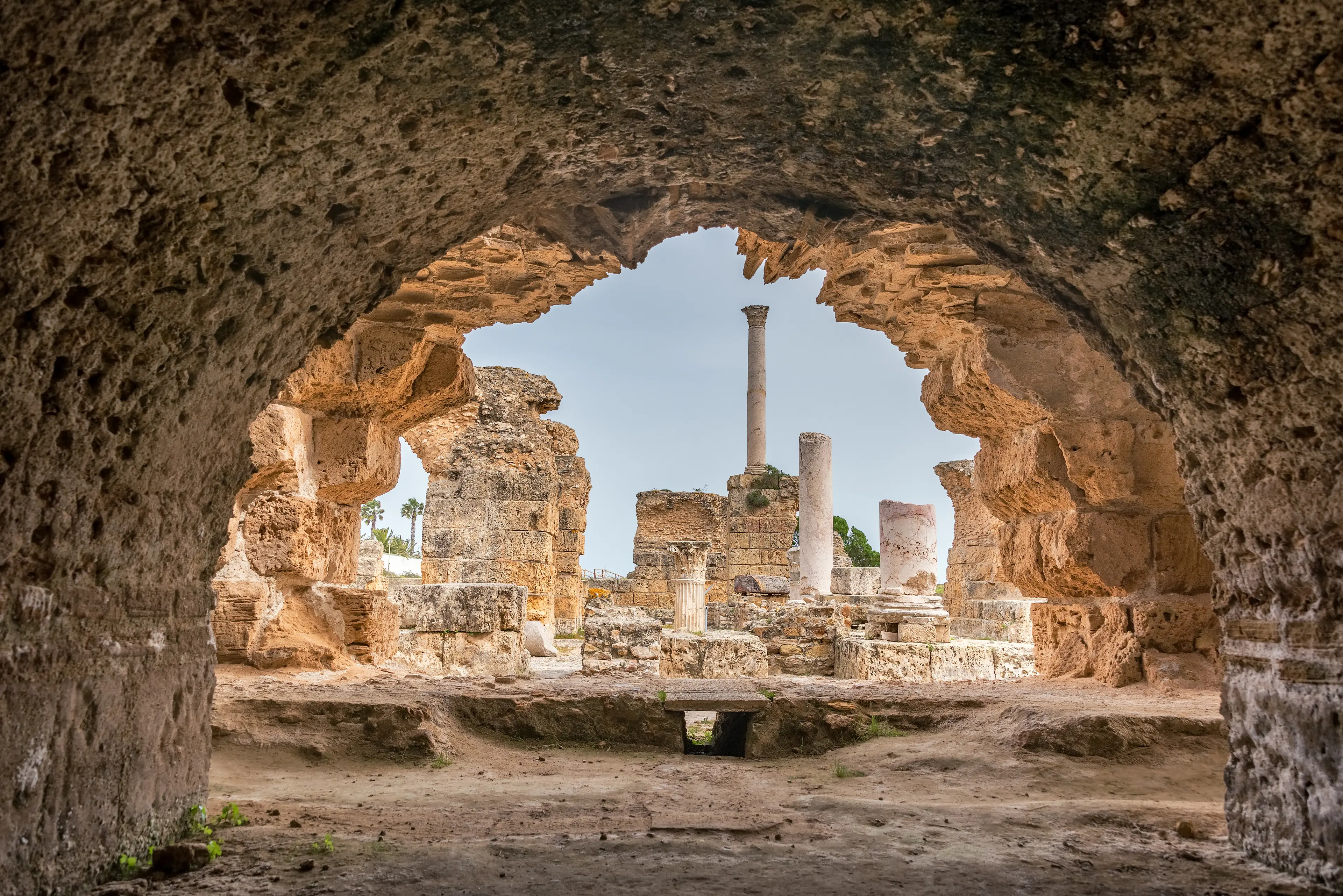
Carthage
Ancient city with rich history and archaeological sites
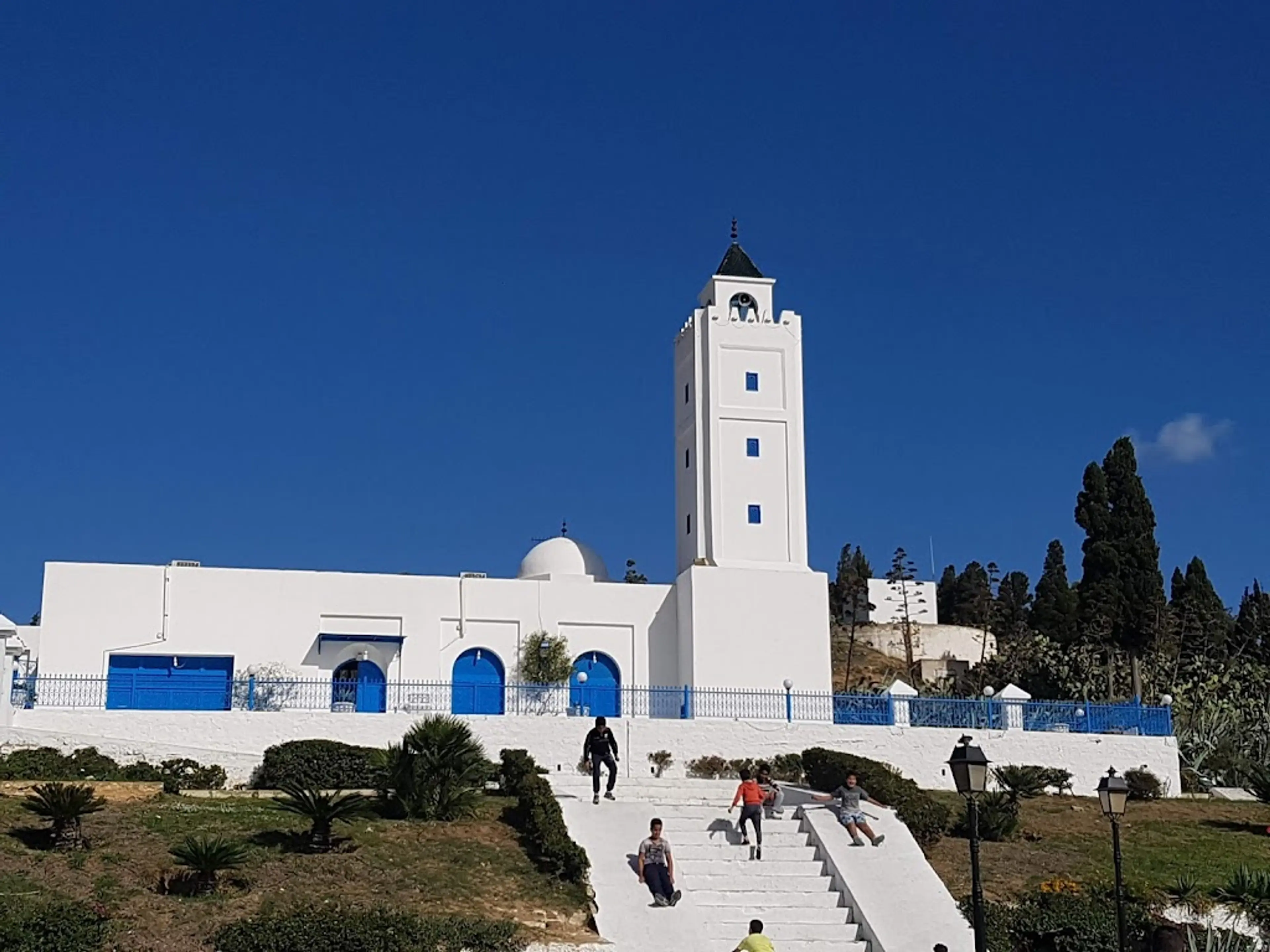
Sidi Bou Said
A town known for its extensive use of blue and white
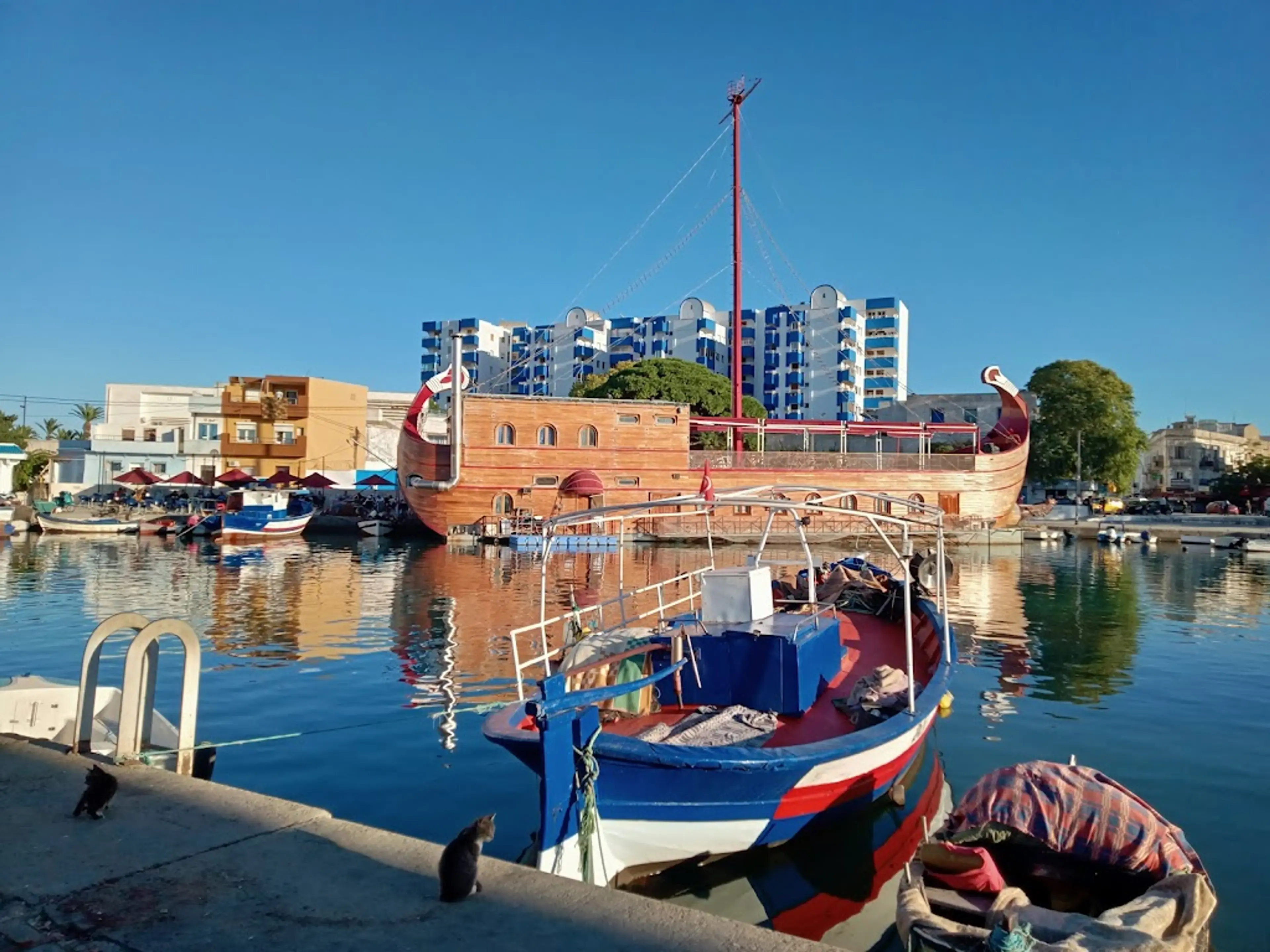
Bizerte
A city with beautiful beaches and old port
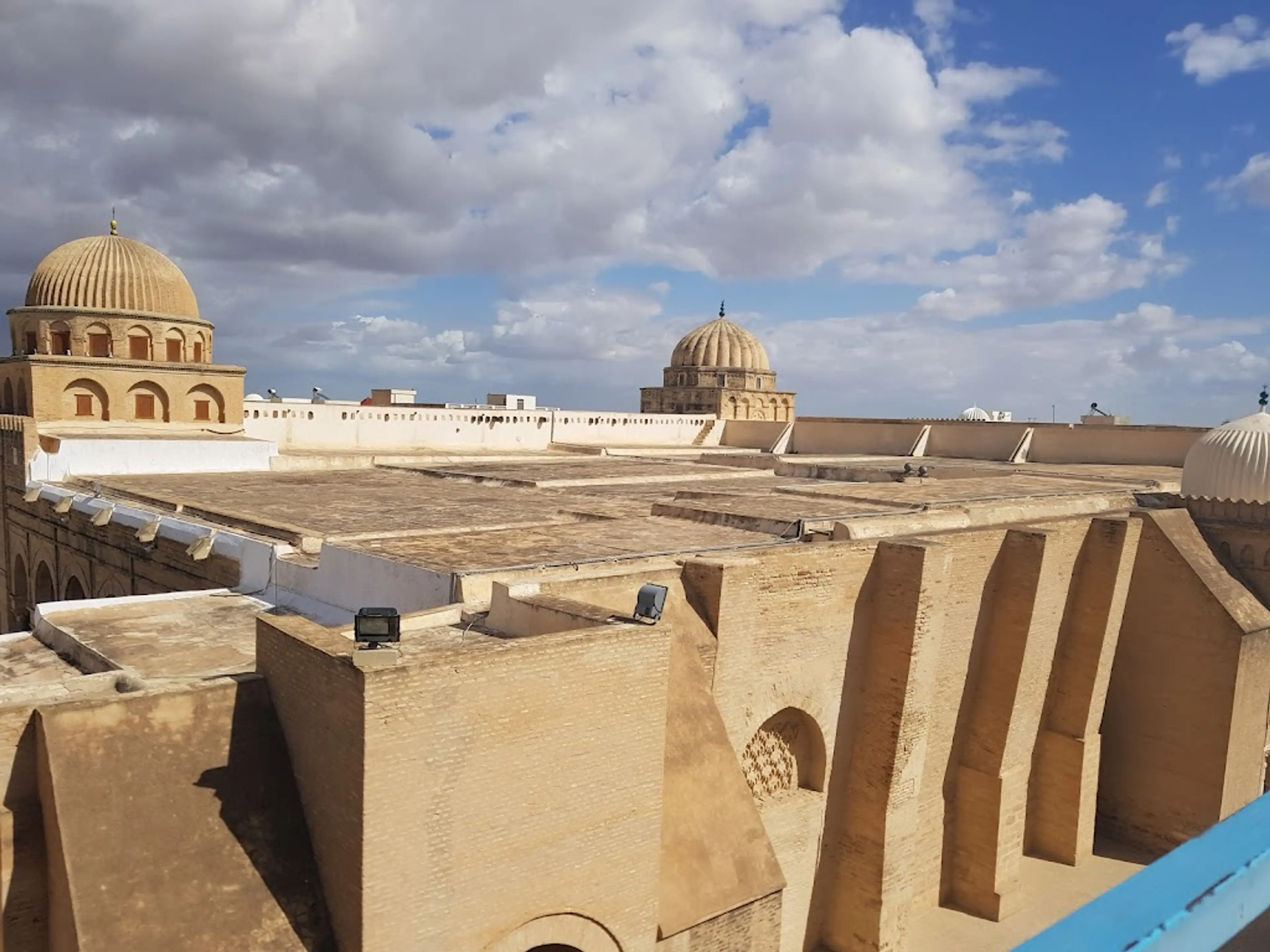
Kairouan
Islamic cultural site and UNESCO World Heritage site
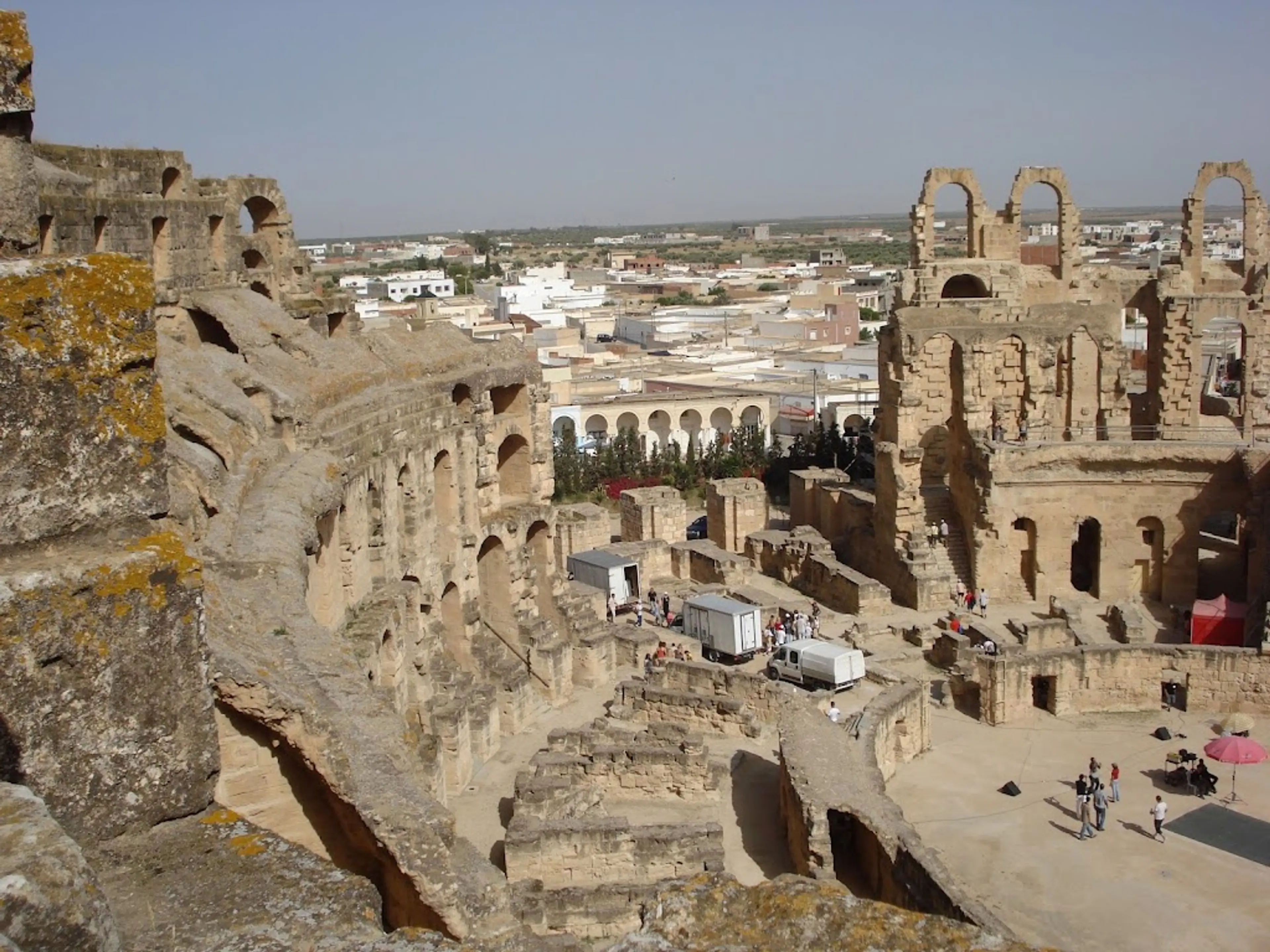
El Jem
Home to an impressive Roman amphitheater
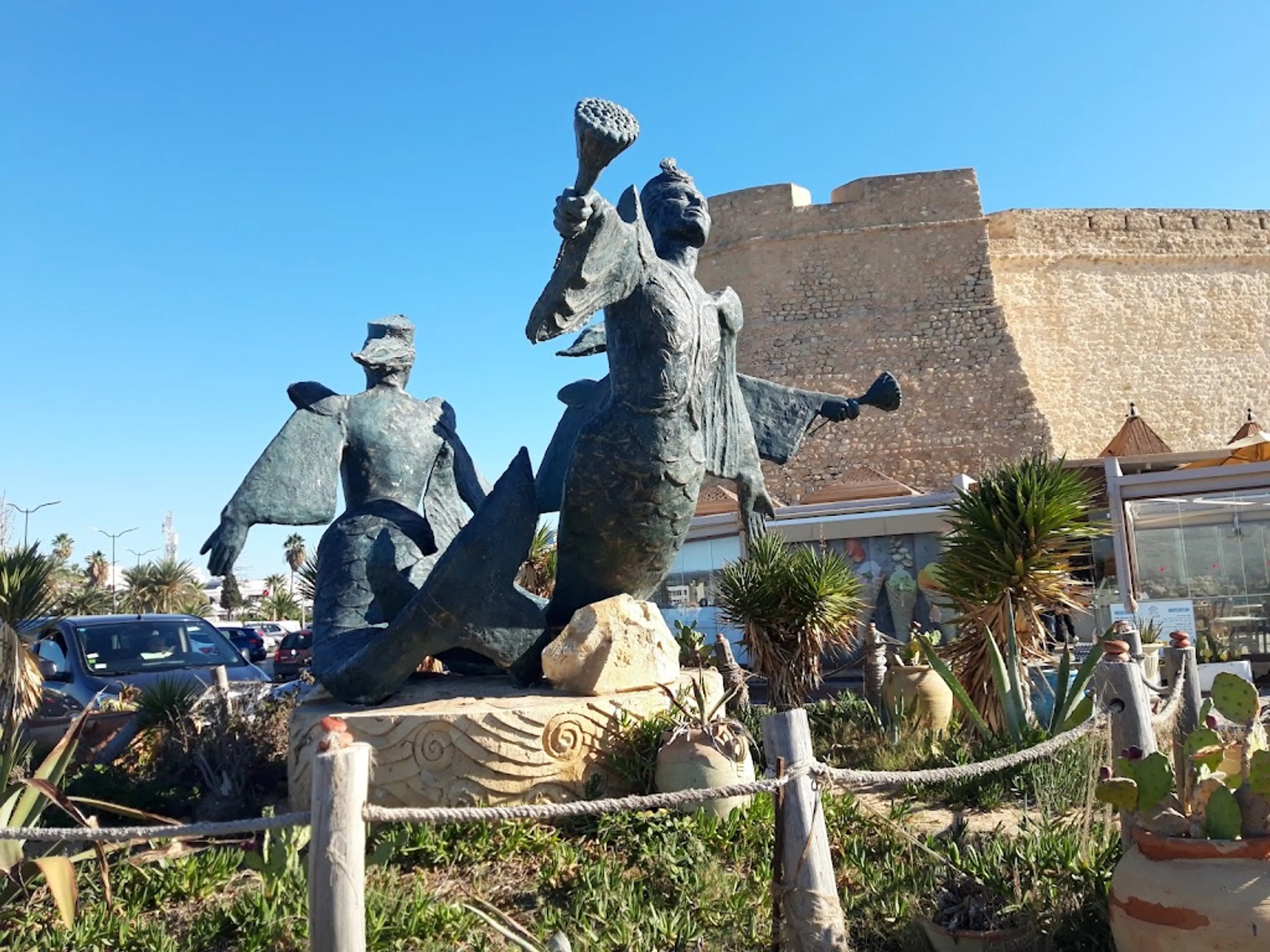
Hammamet
Popular seaside tourist resort

Monastir
Known for its marina and old fishing port
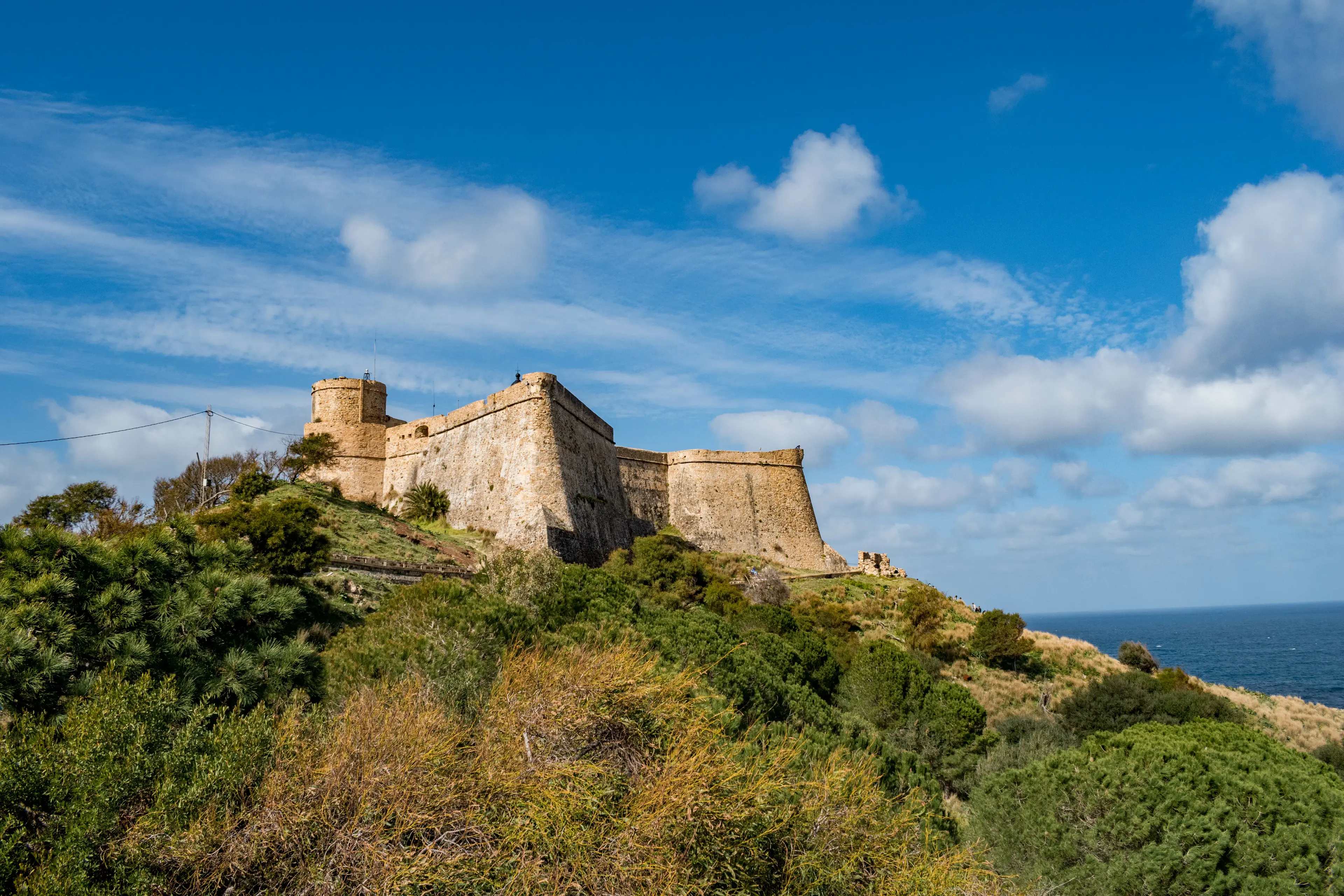
Tabarka
Famous for its coral fishing, the Genoese Fort and its music festival
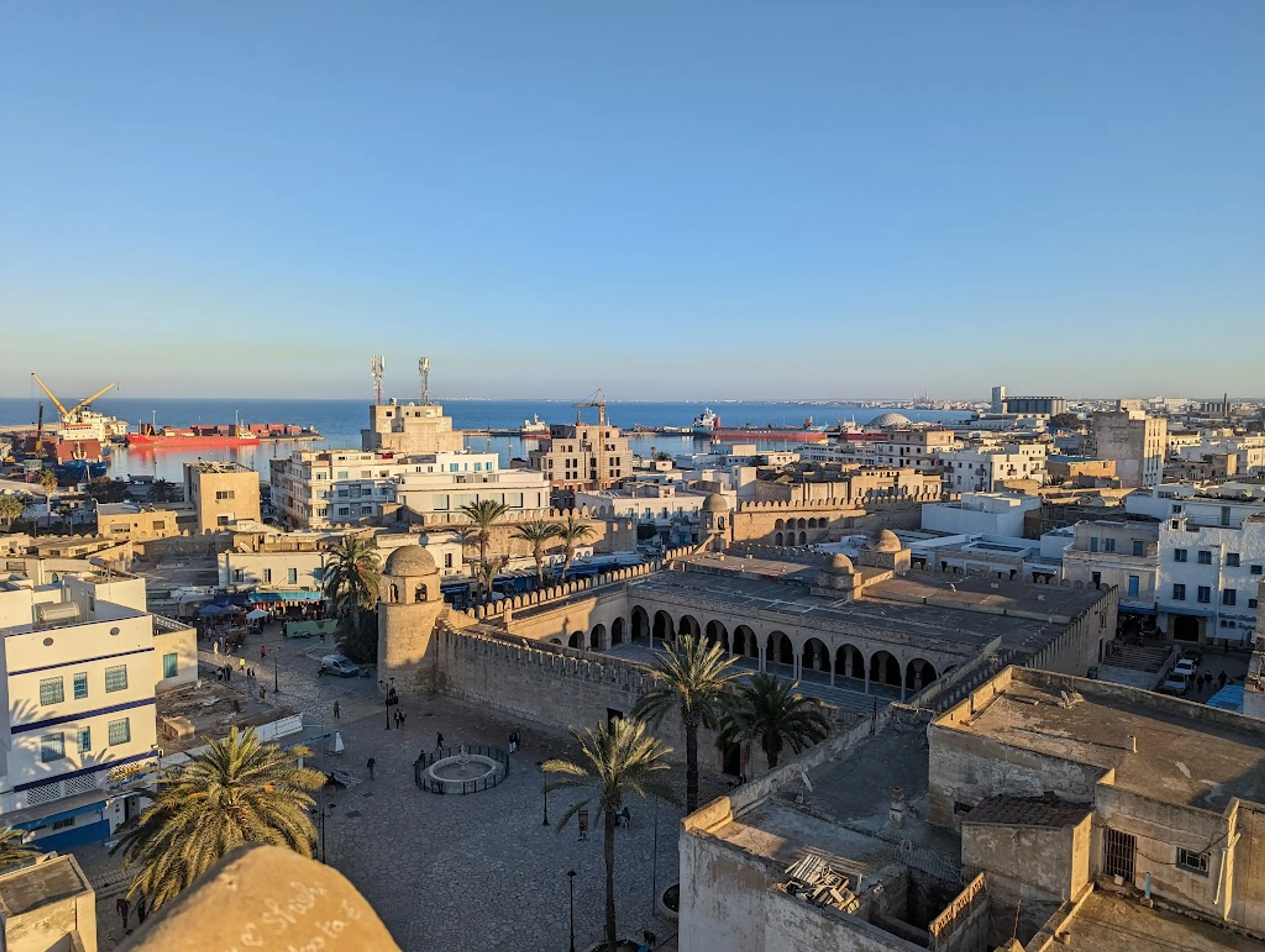
Sousse
A city with a historic medina, which is a UNESCO World Heritage site

Dougga
An ancient Roman site